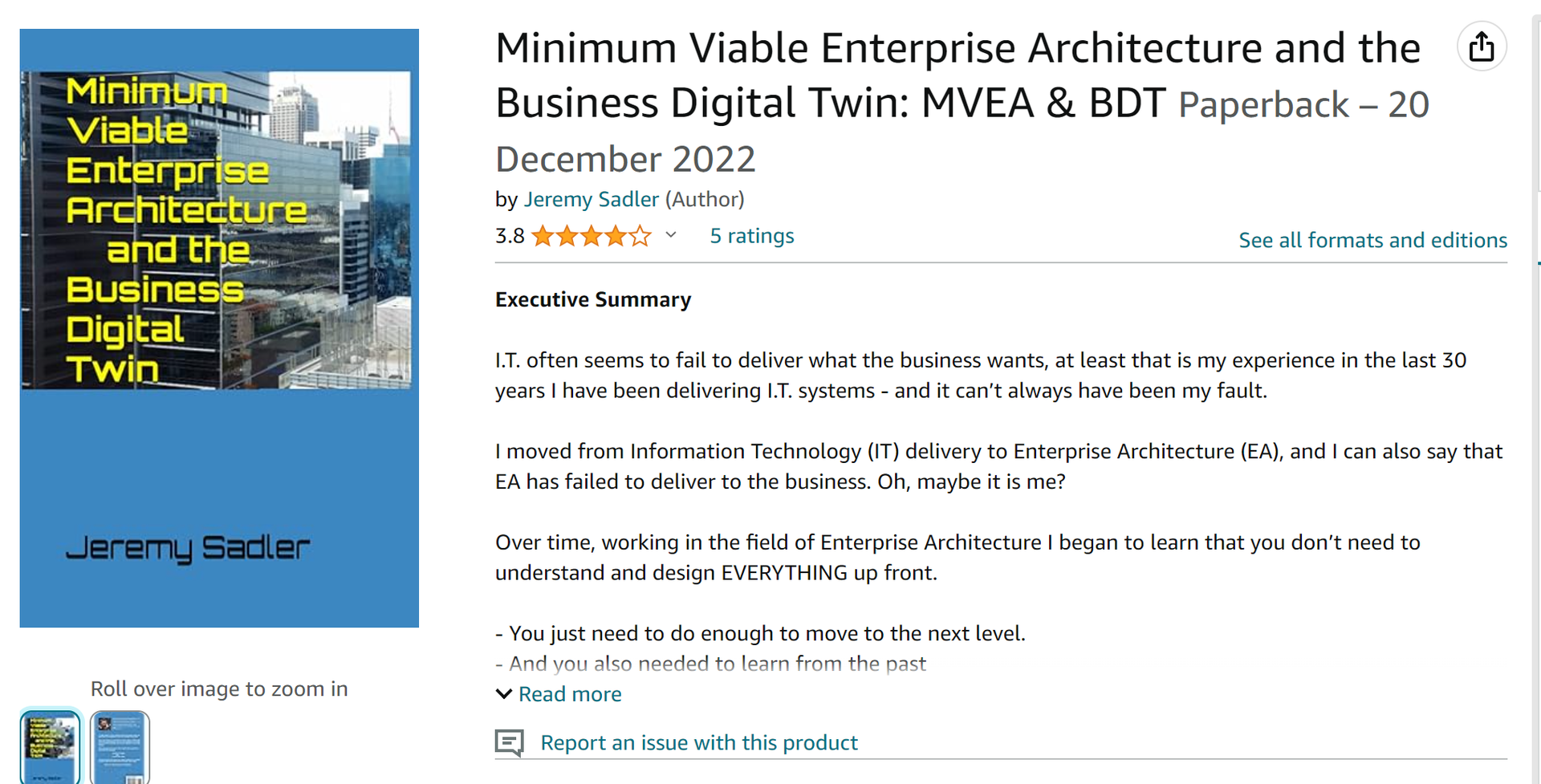Insight
Minimum Viable Enterprise Architecture and the Business Digital Twin by Jeremy Sadler
To our EGC community, in case you missed it - Jeremy Sadler, a member of our EGC network, has designed an Enterprise Architecture methodology and wrote a book to share his methodology and insights for all those interested in exploring!

Jeremy Sadler's Minimum Viable Enterprise Architecture and the Business Digital Twin is a refreshing take on integrating enterprise architecture (EA) with business strategy. This book introduces innovative concepts like Minimum Viable Enterprise Architecture (MVEA) and the Business Digital Twin (BDT), offering practical, low-cost methods to support long-term business planning and adaptation. It’s an absolute must-read for any business leader, IT professional, or enterprise architect looking to enhance their strategic planning and adaptability in a forever changing market!
It's also a fun read with some amusing anecdotes, and, especially for our readers, the book is on sale now for only $3.99 for the Kindle eBook version, and $33 for the printed book (over 22% off) - until the 1st July 2024.
The Book’s Core Themes
Minimum Viable Enterprise Architecture (MVEA)
Sadler emphasises the creation of a foundational, agile, and adaptable architecture that can evolve based on business needs and market conditions. This approach is essential for businesses striving to stay competitive and responsive to new challenges and opportunities.
Business Digital Twin (BDT)
The BDT, a digital replica of the organisation’s processes, systems, and structures, allows businesses to simulate changes and predict their impacts. This capability is invaluable for informed decision-making and strategic planning.
Integration and Adaptability
A key theme throughout is leveraging existing organisational data to create a comprehensive view of the enterprise quickly. This integration aligns IT initiatives with business strategies and goals, enhancing overall coherence.
Practical Implementation
The book provides step-by-step guidance on implementing MVEA and BDT using accessible tools like Microsoft Office and Visio. Practical advice includes creating functional models, linking applications to business functions, and visualising data for actionable insights.
Agile Transformation
Sadler advocates for continuous improvement and adaptability. Agile architecture supports businesses in navigating uncertainties and responding swiftly to new information.
Overview
Minimum Viable Enterprise Architecture and the Business Digital Twin is an excellent resource for IT professionals, enterprise architects, and business leaders. Sadler’s strength lies in offering practical, actionable advice and clear explanations of complex concepts. Real-world examples and straightforward language make the book accessible, even to those without a deep technical background.
The focus on tools like Excel and Visio paired with the extensive Appendix provides detailed instructions on implementing the BDT on Microsoft SharePoint. Sadler’s approach makes the book an excellent EA self-starter guide, complete with free templates for creating the SharePoint BDT! What more could you ask for?
Uptake
The book is rightfully gaining significant traction globally and is referenced in numerous master’s degree thesis across Europe and the UK. Northeastern University in Boston, Massachusetts, has included it in their syllabus, and discussions are ongoing with TOGAF assessors about accrediting MVEA as a methodology. Over fifty organisations worldwide have implemented some form of MVEA BDT in the past three years.
This excellent resource provides a valuable framework for integrating enterprise architecture with business strategy practically and cost-effectively. Its emphasis on agility, integration, and practical implementation makes it a must-read for those looking to enhance their organisation’s adaptability and strategic planning capabilities.
For more details, check out the book on
Amazon or the Intron website (Intron Pty Limited). Jeremy Sadler can be contacted at
mvea@intron.com.au.
Share This Article
Recent Articles



Archive












